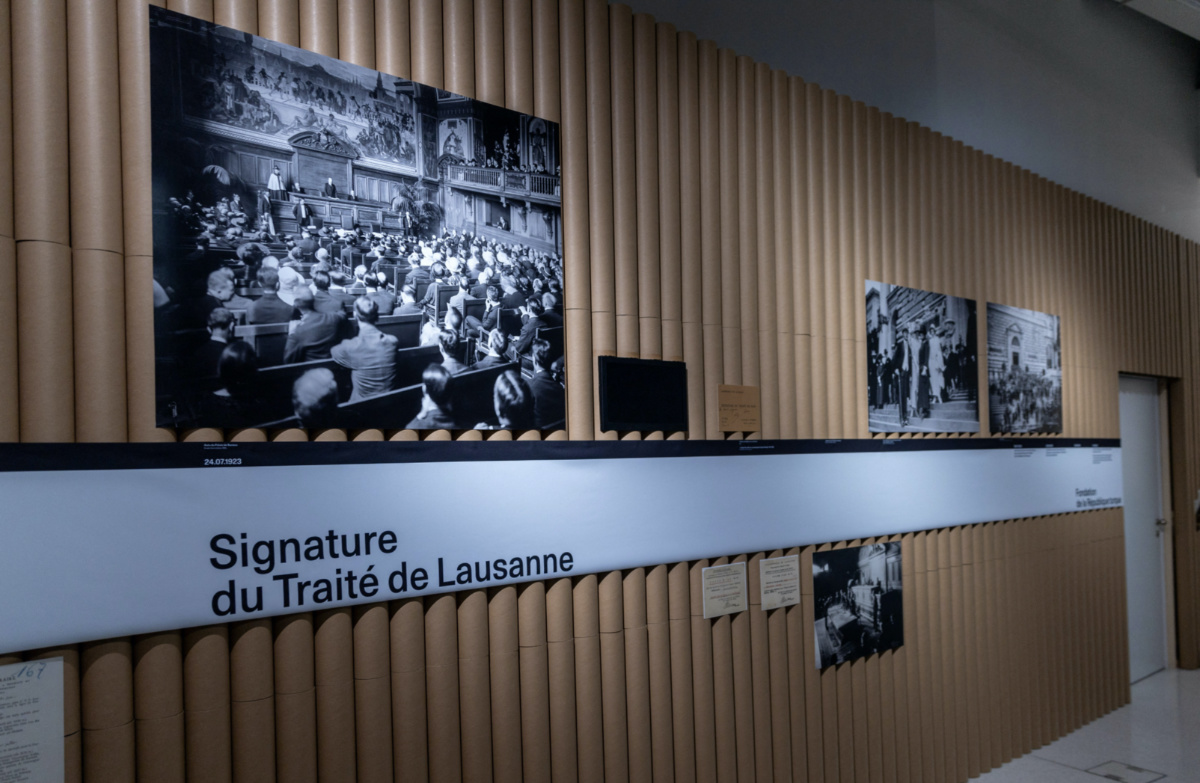Lausanne, Switzerland
Reuters
The Treaty of Lausanne that formed modern Turkey is still cherished by some but remains a disappointment for others including Kurds and Armenians who hoped for autonomous regions and justice for Ottoman-era crimes.
Some of those voices are included in an exhibit called Borders – put on by the Swiss city’s history museum to look at the significance of the post-World War I deal 100 years after it was signed between Turkey and allied powers like Britain and France on 24th July, 1923.

An exhibition marking the 100th anniversary of the signing of the Treaty of Lausanne that fixed the borders of modern Turkey at the end of World War I is seen at the Historical Museum in Lausanne, Switzerland, on 21st July, 2023. PICTURE: Reuters/Denis Balibouse
Turkey’s President Tayyip Erdogan commemorated the anniversary in a statement last year, praising elements of it and saying that Turkey had meticulously monitored its implementation.
Sevgi Koyuncu, who was born in a Kurdish village and now works in Lausanne, said her people had been “negated by a convention” in an interview filmed in the palace where it was signed.
Some 6,000 Kurdish protesters joined a march through the city on Saturday, waving flags and forming human chains.
For Manuschak Karnusian, a Swiss resident whose Armenian grandparents fled what is now Turkey in the early 20th century with the help of missionaries and French war ships, the treaty is like a “second genocide”.
She was referring to 1915 massacres and the forced deportation of Armenians in the Ottoman Empire – an event now labelled genocide by dozens of countries but denied by Turkey, which says thousands of both Turks and Armenians died in inter-ethnic violence.
“You cannot forget. You must show what this [treaty] means,” Karnusian told Reuters, saying that it stood for the “origin of the denial of what happened” to the Armenians.
While the agreement was hailed at the time as a chance for lasting peace, some of its outcomes, like the exchange of more than 1.5 million ethnic Greeks and Turks, are now seen as a “terrible mistake”, said Jonathan Conlin, a historian at a project that looks at the legacy of the treaty.
“I think it [the treaty] has endured because everyone’s equally unhappy about it,” he said.






